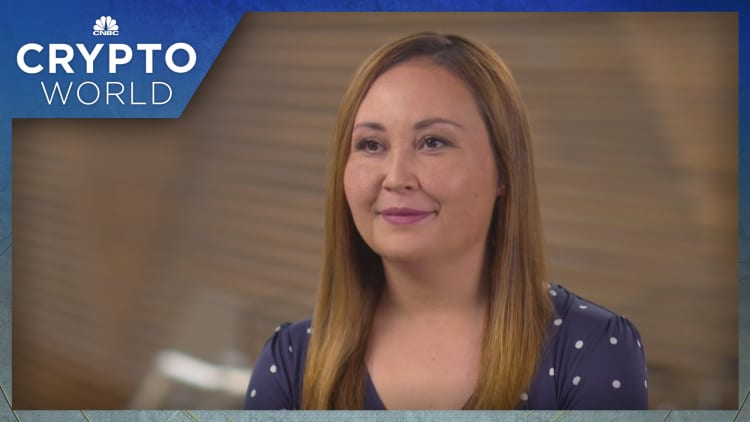As fears grow that the U.S. economy is headed for a recession, a number of companies have announced massive waves of layoffs.
It's a stark reversal after a year or more of mass voluntary resignations and job switching amid plentiful employment opportunities nationwide, in a trend known as the "Great Resignation."
Among the recent layoff announcements:
- Cryptocurrency exchange Coinbase shared this week that it was letting go almost a fifth of its workforce, or around 1,100 people.
- Real estate firms Compass and Redfin announced workforce cuts of 10% and 8%, respectively.
- Tesla CEO Elon Musk sent an email to employees earlier this month sharing plans to cut 10% of salaried workers.
- Mail-order clothing service Stitch Fix said earlier this month that it was reducing its headcount by around 15%.
"We don't know where the labor market is headed yet," said Andrew Stettner, an unemployment expert and senior fellow at progressive think tank The Century Foundation. "But clearly many things are flashing warning signs."
More from Personal Finance:
What does a 'bear market' mean?
10 states hit hardest by Social Security staff cuts
Why 401(k) savers may get a 'wake-up call' in statements
Losing your job and income can be incredibly disruptive, setting off a myriad of financial problems.
By focusing on the first steps you should take after a layoff, though, you can prevent spiraling too much and boost your odds of a positive next chapter, experts say.
1. File ASAP to collect unemployment benefits
You should file for unemployment benefits as soon as possible, Stettner said.
If you received unemployment benefits earlier in the pandemic and are facing joblessness again, you may qualify for more aid.
The rules vary state by state, but generally, so long as you've worked at least 15 weeks since last receiving unemployment benefits, you're eligible to open a new claim for a partial payment, Stettner said. Most people will need to have been working for at least six months to qualify for a full benefit again.

If you've been employed for more than a year, your benefit should come fairly quickly.
2. Weigh health insurance options
Next, you want to also make sure you don't find yourself without health insurance.
"As overwhelming as it may be, it's important to look for coverage quickly" after a layoff, said Caitlin Donovan, a spokesperson for the National Patient Advocate Foundation, a nonprofit that helps individuals access and pay for health care.
Your first step should be to speak with someone in your company's human resources department to understand when your coverage technically ends.
"There's no blanket rule here: For some, coverage may end immediately; for others, it may go until the end of the month," Donovan said. "Either way, you should immediately start planning to transition to a new plan."
Navigating the health insurance landscape on your own can be stressful and confusing.
There are resources you can turn to for help. If you have a diagnosed condition, including cancer, lupus or diabetes, you may be able to get support deciding on and enrolling in a plan with the National Patient Advocate Foundation, Donovan said. You can also consult with a local health-care "navigator."

Generally, newly laid off and uninsured people will have three routes to coverage from which to pick: COBRA, the Affordable Care Act subsidized marketplace or a public plan such as Medicaid or Medicare.
COBRA gives those who have left a company the option of staying on their former employer's insurance plan, although it's typically very expensive. That's because people have to keep paying the part of their premium they'd been responsible for while working, as well as the remainder, which their former employer had covered.
Medicaid typically involves no or low monthly premiums, and marketplace plans are the cheapest they've ever been for many people, thanks to relief legislation passed in the pandemic.
3. Protect your retirement savings
Many people save for their retirement through their job. If you had access to a 401(k) plan at the company from which you were laid off, you'll need to decide what to do with that account.
You may not want to do anything, said Rita Assaf, vice president of retirement leadership at Fidelity.
Most employers allow you to keep your plan with them after you leave, Assaf said. (However, if you have less than $5,000 in the account, the money may be sent to an individual retirement account for you, she added.)
Make sure to research fees and expenses when choosing an IRA provider.Rita Assafvice president of retirement leadership at Fidelity
However, you won't be able to continue contributing to a plan at a company you're no longer working for. And you may be limited in how much you can take as a loan or withdraw from the account.
Another option is to roll over the account into an IRA, which can be opened at a bank or brokerage firm. This would allow you to continue saving. You'd also be able to withdraw money from this account if you're under 59½ without any penalties, Assaf said, if you use it for a first-time home purchase or higher-education expenses.
"Make sure to research fees and expenses when choosing an IRA provider, if you do, though, as they can really vary," Assaf said.

If you're hopping to another job right away, you may have the option to roll your old 401(k) plan into one with your new employer. Having just one savings retirement account may feel more manageable.
"It's important to note that not all employers will accept a rollover from a previous employer's plan, so you should check with your new employer before making any decisions," Assaf said.
What you don't want to do, if at all possible, is to cash out the account, she said. You'll likely be dinged with taxes and penalties, not to mention risking your financial security when you leave work for good.
Were you recently laid off? If you're willing to chat about your experience for an upcoming article, please email me at annie.nova@nbcuni.com


